21st Century Learners as Activists
Topics
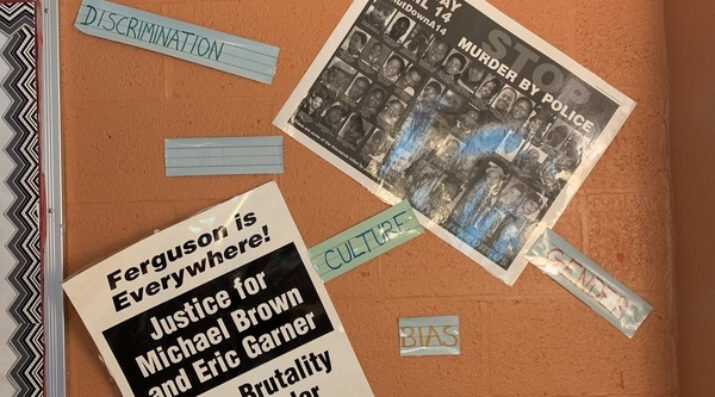
We’ve all had the experience of truly purposeful, authentic learning and know how valuable it is. Educators are taking the best of what we know about learning, student support, effective instruction, and interpersonal skill-building to completely reimagine schools so that students experience that kind of purposeful learning all day, every day.
Our education system is not immune to racial and economic inequities; teaching advocacy skills, curiosity, and critical information analysis equips students to take action when needed.
If 2020 has revealed one thing, it's the level of racial and economic inequality that continues to plague our country and world. As future leaders, it's imperative that all of our students, regardless of their ethnicity or zip code, know how to advocate for themselves and their communities. Our education system is not immune to the inequities of our society. Therefore, I make teaching methods of advocacy a priority within my classroom through intentional units and lesson plans that push students to examine current systemic structures and institutions while also learning about methods of mobilization, organization, protest, and advocacy to utilize outside of the classroom.
Systemic inequalities, social justice, civil disobedience, and identity are recurring themes within my classroom. As such, the physical environment of my classroom reflects this with posters of civil rights leaders, images of those killed by police brutality, and political cartoons reflecting hot button issues.
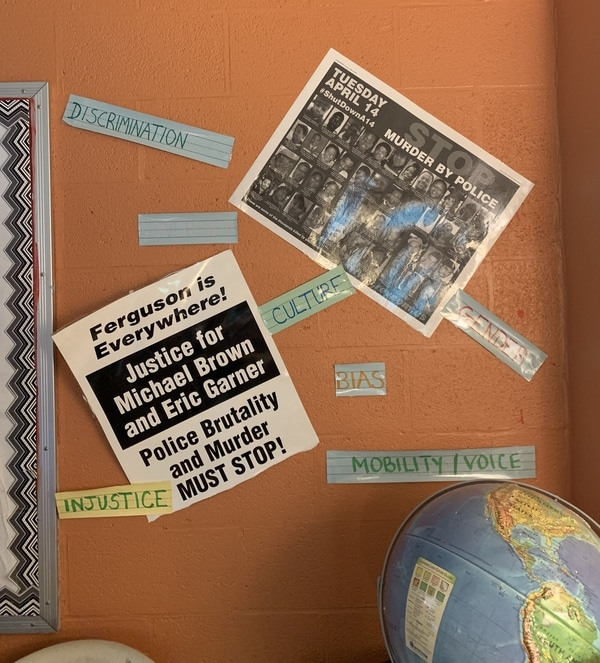
Courtesy of Theresa Bruce
Students are encouraged to think outside of the box and use their minds to inquire about the world around them. Teaching is the exchange of ideas, pushing beyond comfort zones. Teaching is a call to learning and a call to action that promotes a critical eye to information. My classroom was made for discussion and activism.
Nat Turner is one of those controversial historical figures who creates the perfect opportunity for discourse and an example of activism. Was he a hero or a madman for leading a slave rebellion? This lesson defines me as a teacher and learning in my classroom because it pushes students to utilize their prior knowledge of the time period, allows them to closely analyze primary source documents, engage in conversation, and evaluate their thinking from the beginning of the lesson until the end. All key pieces necessary for activism and advocacy. The lesson begins with a video providing background information on Nat Turner’s rebellion. Throughout the lesson students analyze the language of primary sources, evaluating tone and searching for biases of the author. We pay attention to the source and evaluate its validity. Once the analysis is complete, students engage each other in small group discussion sharing their answer to the prompt and justifying with evidence. In the small groups, students grapple with the idea that one person’s hero could be another’s terrorist. They debate the idea of breaking the law for the right reasons—something that is as relevant today as it was in 1831.
However, this lesson is just a subset of a larger unit on civil disobedience. This unit provides case studies and examples of how throughout history, after evaluation of current practices, people have intentionally broken unjust laws to change them. The character traits and skills that students demonstrate through this lesson and throughout the unit—such as curiosity, critical questioning, corroboration, sourcing, bias evaluation, and evidence citation—extend beyond the classroom. This unit ends with students identifying an issue they recognize as unjust to an entire group of people in their home, school, or city communities. Students research the issue, form social action groups, and create a campaign to address it. The campaign consists of a logo design, presentation, and website. Students present their campaign to the class and larger school community and publish the website with the global community. As a result of their learning, students' mindsets shift from accepting information and situations at face value. Instead, they become critical consumers equipped with the skills to take action when needed.
This unit and class has impacted students' success by developing their critical information analysis and advocacy skills. In 2019, one of the social action groups identified the school uniform policy and parts of the school behavior policy as unfair to the student population. They created a uniform petition and collected student and staff signatures. Additionally, they created a proposal for the behavior management system. They invited the leadership team to their presentation and presented the petition. As a result, the uniform for this current school year was changed and a different behavior management system was created. This has resulted in students recognizing the power of their own voices and an active call for the organization of a Student Government Association.
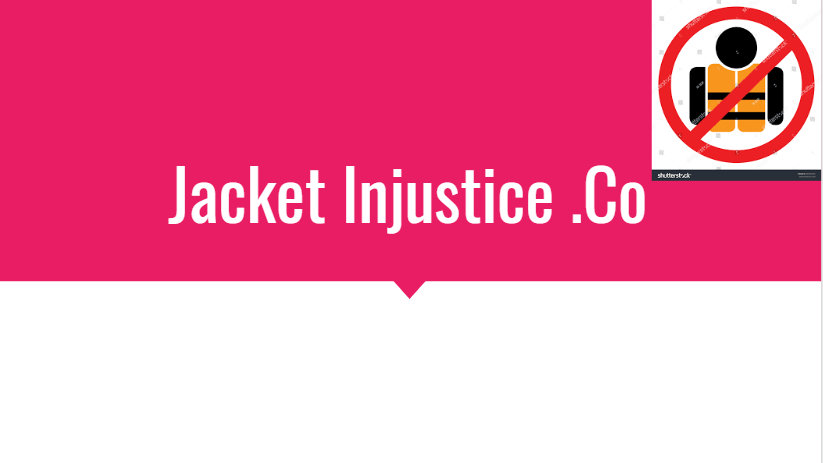
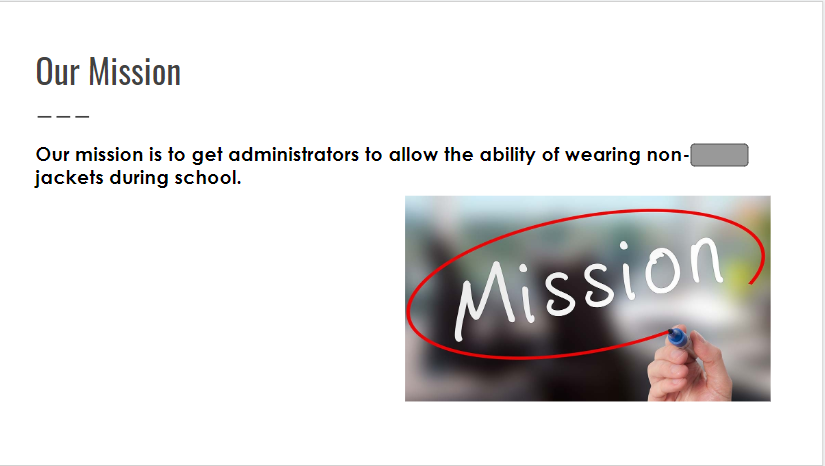
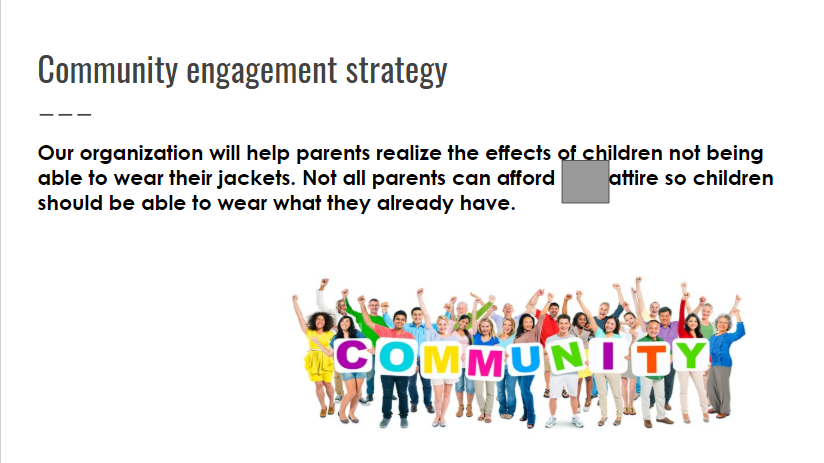
Courtesy of Theresa Bruce
In 2018, a former student shared with me an injustice he saw at his private school which did not create space to discuss the defacing of school property with racially offensive language or allow the creation of racial or ethinic clubs such as a Black Student Association. He believed that his current administration was ignoring the problem and sought to call attention to this. He used the skills learned in this class to identify the issue. He conducted research via interviews with peers and alums. He read the official statements of administrators and analyzed them for bias. After taking these steps, he garnered support from like-minded peers, created a petition, and arranged a face to face meeting with his school administration. As a result of the skills he learned in this class, he and his peer group successfully lobbied and won their right to host racial and ethnic clubs.
Although I have spent a majority of this article highlighting the methods that I use to cultivate critical thinkers and the impact of such methods on students, it isn't just my students who need to learn these skills—it's every student. As a teacher, I'd encourage you to step outside of your comfort zone. Examine the narratives that are told inside our schools, inside of our communities, and within our society. Examine the structures of our institutions. Ask yourself, who is impacted by these narratives? Who do these institutional structures support? Who is harmed by these narratives and structures? Encourage your students to do the same. Most importantly, provide students with the resources, opportunities and space to question and discuss issues important to them. Assist them in being critical consumers of information. Let’s change narratives.




